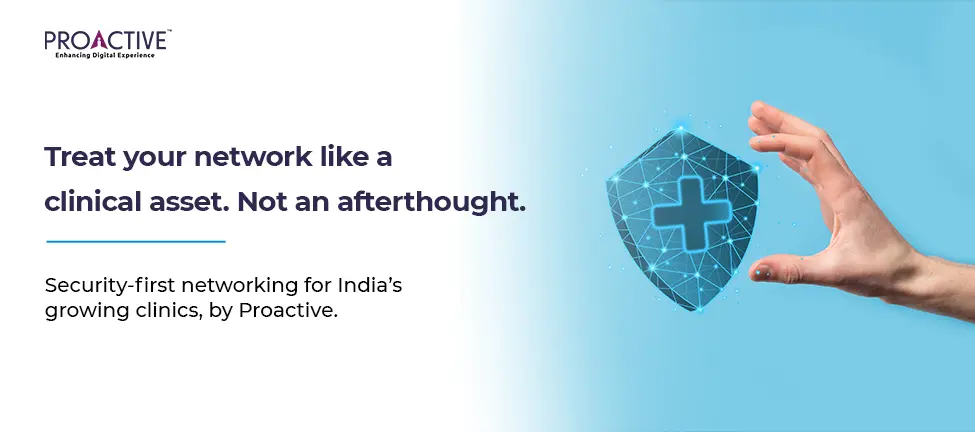Updated: July 18, 2025

The Diagnosis Is Clear. Your Network Needs Surgery.
Clinics across India, from Jalandhar to Jaipur, are going digital. Patient records move to the cloud. Lab reports upload in real time. Billing systems connect across branches. But as healthcare providers scale, many still treat their networks like an afterthought.
Every unsegmented port, every open guest login, every device that connects without policy weakens patient trust. And in healthcare, trust is everything.
Why Clinics Are Now Prime Targets
Clinics store the kind of data attackers want: identity proofs, prescriptions, medical histories, and billing information. Yet most lack the security architecture of larger hospitals. Cybercriminals know this.
Five Network Weak Spots That Invite Trouble
1. No VLANs, No Segmentation
When your guest Wi-Fi runs on the same LAN as your EMR system, a malware-infected phone can reach critical assets.
Fix it: Create VLANs for admin, doctors, diagnostics, IoT devices, and guests. Each should follow strict access rules. Keep clinical systems isolated.
2. Default Passwords and Shared Credentials
Routers with factory settings. User IDs that staff share across shifts. These are easy targets.
Fix it: Enforce unique logins. Implement MFA. Use a password manager. Replace generic credentials with identity-based access.
3. No Monitoring or Traffic Inspection
If your network can’t see what’s happening, it can’t catch threats. Many clinics discover breaches only when the damage is done.
Fix it: Use firewalls with deep packet inspection. Deploy tools like Cisco Umbrella for threat intelligence. Enable real-time alerts for anomalies.
4. Lack of Role-Based Access Policies
When every staff member can access every system, one compromised account can expose all records.
Fix it: Set role-based access. A lab technician doesn’t need billing access. A receptionist shouldn’t see clinical notes.
5. Flat Wi-Fi Networks Shared by Staff, Devices, and Guests
Smart TVs, tablets, printers, and personal phones, all competing on the same unsecured wireless.
Fix it: Deploy Wi-Fi 6 with multiple SSIDs. Separate medical, admin, and guest access. Apply bandwidth policies and encryption across all.
What’s At Risk If You Don’t Act
This isn’t about IT hygiene. It’s about clinical integrity.
What Proactive Does Differently
We help clinics across India, from Navi Mumbai to Coimbatore, build security-first networks. We design segmentation maps, deploy cloud-managed firewalls, and isolate clinical assets from public interfaces.
Our Cisco-first deployments use Meraki, Duo, and Umbrella, tailored for clinics that need 24x7 uptime and zero complexity. And our managed services team monitors threats before they disrupt care. When you work in healthcare, prevention matters. That includes your network.
What the Data Says
Questions You Should Ask Today
If not, you’re one click away from exposure.